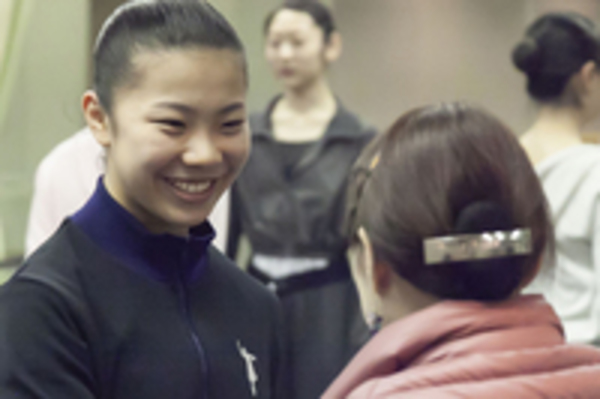


Over the past week I have been posting blogs on the ABP website. So far the blogs have been “re-postings” of ones I wrote for the Yokohama Ballet Intensive website, blogs that I feel are still relevant.
I was surprised (pleasantly!) by the response to one blog:
On Compliments & Corrections, and Being a Strict Ballet Teacher in Japan
Not only did people leave very interesting comments under the blog, I also had a few video calls to discuss further.
Here are a few of the comments:
I believe I shouldn’t try to control my students with fear.
Research tells us that the brain does not learn when fear is present, period.
Sometimes, when a student comes from a very strict teacher […] then is with a new teacher that compliments, they relax and lose motivation [but] once they realize they need self motivation and self discipline they return to working with good results.
[When students] know that they are going to hear criticism as well as praise it leaves [their] minds more open for discussion.
Many of us are looking for more effective ways to guide and inspire our students.
For a start we need to rethink ballet class and let go of tradition when it no longer serves us well.
I am reading essays in a book edited and curated by Adesola Akinleye: “(Re:) Claiming Ballet”, published in 2021 by Intellect. Some essays are relevant to this topic. One I highly recommend is “Ballet Aesthetics of Trauma, Development and Functionality” by Luc Vanier and Elizabeth Johnson.

Let’s keep sharing our ideas.
#ballet #ballettraining #ballettechnique #balleteyefocus #バレエテクニック #バレエトレーニング #バレエジャパン #日本バレエ #balletjapan #strictballet

photo: Helen Price coaching a student
Teachers the world over want to help students reach their full potential so they give them corrections, advice and criticism. In the west it is common for teachers to acknowledge something a student has achieved before challenging them with a correction. “Beautifully stretched feet, Sarah, now try to coordinate the lift of your arms with your jump.”


Maybe you have heard people say that Asian students are good at math. Well, studies do indeed show that students from Asian countries, such as Japan and Korea, consistently outperform their North American counterparts in math. Why is this so?
Malcolm Gladwell lays out his answer to this, and other questions about how people achieve success, in his book “Outliers”(published by Little, Brown and Co. 2008). Gladwell describes a study in which students are given an extremely challenging math question and a set amount of time to try to solve it. After a few minutes, the majority of the students realize the problem is too advanced for them. At this point the North Americans tend to stop working. The Asian students, however, continue working until the time is up.
This, says Gladwell, aligns with the beliefs about math ability generally held by North Americans (that it is something you are born with, or not) and the Asians (that it is something you acquire through persistence). Mr. Gladwell outlines the influence rice farming (one of the most labor intensive and cognitively challenging crops) has had on Asian culture and the value Asians give to persistence in all areas of life.
So, North Americans think success is achieved by discovering the talent you are born with and honing it and Asians, including Japanese, think that success is achieved through persistence.
How does this Japanese persistence play out in the dance world? Nobody will dispute that dancers who succeed do so after many years of hard work and persistence whatever the cultural background. The difference between Japanese and non-Japanese students is streaming: who is encouraged to persist and who is advised to give up.
Due to this persistence, are there Japanese dancers who succeeded despite having less than ideal physiques or talent? ...and others who caused themselves permanent injury, physical or mental? Are there North American students who seemed to have less than ideal physiques or talent in their younger years who, but for discouragement from teachers, could have succeeded had they persisted?
I think it is fair to say that one of the reasons many North American schools welcome Japanese students is because their presence inspires a higher tone of discipline and persistence among the entire student body. I do feel, though, that this dedication to persistence can have the “side effect” of hampering Japanese students’ ability to explore more subtle, but highly important, concepts such as efficiency of movement, releasing of tension, and attention to breath.
#ballet #ballettraining #japaneseballet #balletstudents #balletjapan #バレエ #バレエトレーニング #バレエテクニック #ジャパニーズバレエ #日本バレエ #バレエコンクール #balletandmath

Some of the most interesting articles about culture and psychology that I have found are written by a company called Humintell not least because the company’s director, David Matsumoto, has a particular interest in the differences between Japanese and American culture.
A recent blog was titled “The Cultural Significance of Smiling”.
In it the author says, “Initially, it is important to note that Americans and Japanese, when alone, tend to display very similar expressions of disgust, anger, fear, and sadness. These have been shown to be universal expressions, after all. However, when others are present in the room many Japanese [...] smile despite being exposed to disgusting or sad imagery.”
The article goes on to explain that for Japanese people stoicism and seriousness are signs of maturity and smiles are often used to hide underlying feelings.

So, the meanings of some smiles differ from culture to culture. When you interpret someone’s smile it is very likely you will do so according to your own cultural norms. If the person smiling is from a different culture you might be getting the wrong message!
Here is another great Humintell blog about smiles:
“Not All Smiles Are The Same”

#ballet #ballettraining #culture #communication #smile #バレエ #バレエトレーニング #balletjapan
0 Comments :
Write a comment :